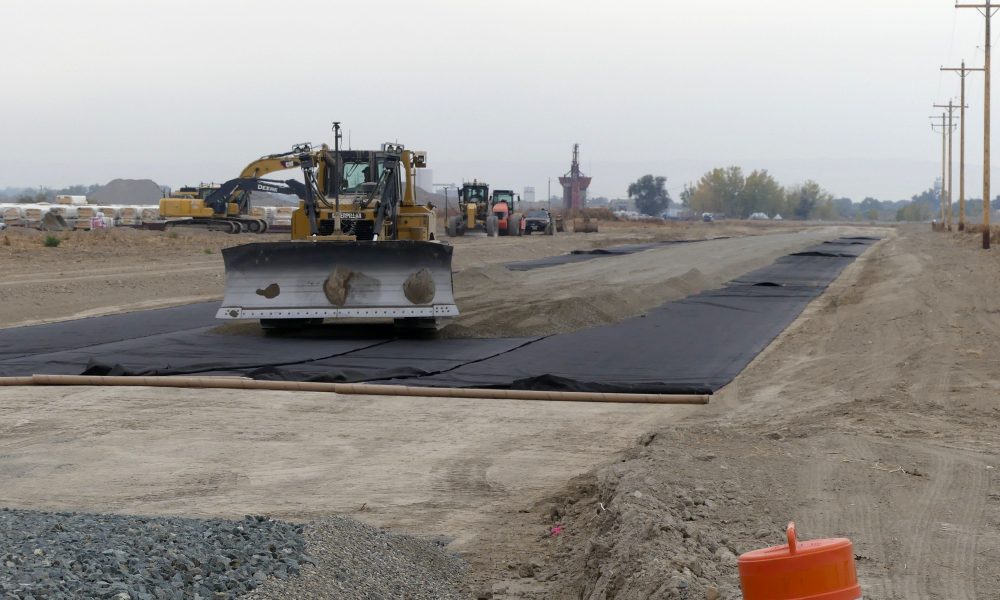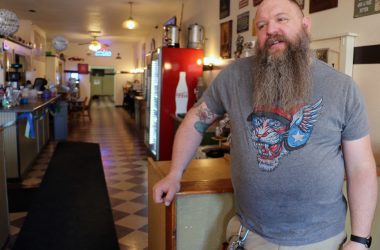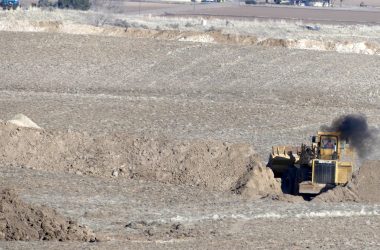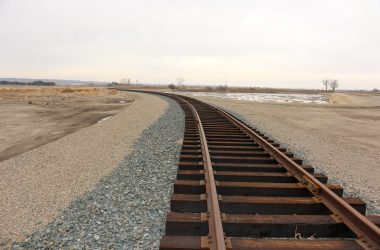VALE – The Malheur County Court, in the past compliant regarding support for the Treasure Valley Reload Center, now is sharply questioning a request for a $2 million bailout to build a fourth rail spur.
That spur, dubbed Track C, was described as an urgent need when the directors of the Malheur County Development Corp., the public company set up by county commissioners to oversee the reload center, announced that Union Pacific Railroad will only serve the shipping depot if the spur is installed.
Project leaders recently cast that as surprising news and last week sought an immediate grant of $2 million in county money to hurry construction of the rail spur.
READ IT: Industrial Track Agreement
They provided muddled explanations to the county court at its meeting Wednesday, Nov. 2, about how the crisis developed and left the county commissioners insisting on more information. County Judge Dan Joyce and Commissioners Ron Jacobs and Don Hodge said they would hold off deciding until they got that information.
“Time is critical as winter is approaching, so we hope to get this work underway quickly.”
–Greg smith, project manager
Brad Baird, project lead engineer and president of Anderson Perry & Associates, told commissioners that cost details were readily available, assuring the commissioners they would have them the day after, Thursday, Nov. 3. As of Friday, Baird had not provided the information.
The reload center is designed so onion producers can truck their produce to the site north of Nyssa for loading onto rail cars for shipment to destinations in the Midwest and East.
The Track C debacle is the latest setback for a project once budgeted at $26 million and now is estimated to cost $39 million. But project leaders are short $8 million to finish the work, which is now two years behind schedule.
READ IT: Latest construction schedule
They hoped to get $2 million of that from the county, and fast action was urged.
Greg Smith, a Heppner contractor managing the reload center, advised the county court the day before its meeting to act soon.
“Time is critical as winter is approaching, so we hope to get this work underway quickly,” he wrote.
That was the similar claim Smith and his team made to legislators in September when they obtained another $3 million in state funding. They said they wanted to get foundation work underway immediately. Since then, they have pushed off that work until next spring.
Baird and Smith said in late October that they were surprised to learn that Track C had to be done before Union Pacific would provide service.
Appearing before the county court, the two project leaders were vague about why the demand appeared so late in the construction work.
Baird explained the rail yard operations in a way that suggested that the Treasure Valley Reload Center would never have been functional without all four tracks. He explained one spur would be used for Union Pacific to pull a string of empty cars off its mainline. Those empty rail cars would be stored on one rail spur, moved a few cars at a time to yet another spur for loading at the warehouse, and then finally parked at a fourth spur, loaded and ready for shipment.
READ IT: Recent budget review
Baird didn’t explain how that could happen if one of the spurs was missing. He and Smith didn’t respond to written questions from the Enterprise seeking clarification.
But the two men confirmed earlier reporting by the Enterprise that the rail spur in doubt was in fact required by the development company’s contracts with Union Pacific and the state Department of Transportation.
Contracts were drafted last fall to build the spur but never executed. In April, Smith said Track C would be postponed for three years. The development company directors didn’t question that development, according to board minutes.
Last week, Smith told the commissioners that there was no choice but to build the spur.
“We knew all along as a result of the industrial track agreement we needed Track C,” Smith said.
He indicated his team failed to get the needed approval to postpone the track after asking its rail engineers, RailPros, to intercede.
“We engaged with them and asked them to work with Union Pacific to help us defer that into the future and, at the end of the day, we were not able to accomplish that task,” Smith conceded. He gave no indication when that effort failed or why his team would be surprised by subsequent notice that Track C had to be built.
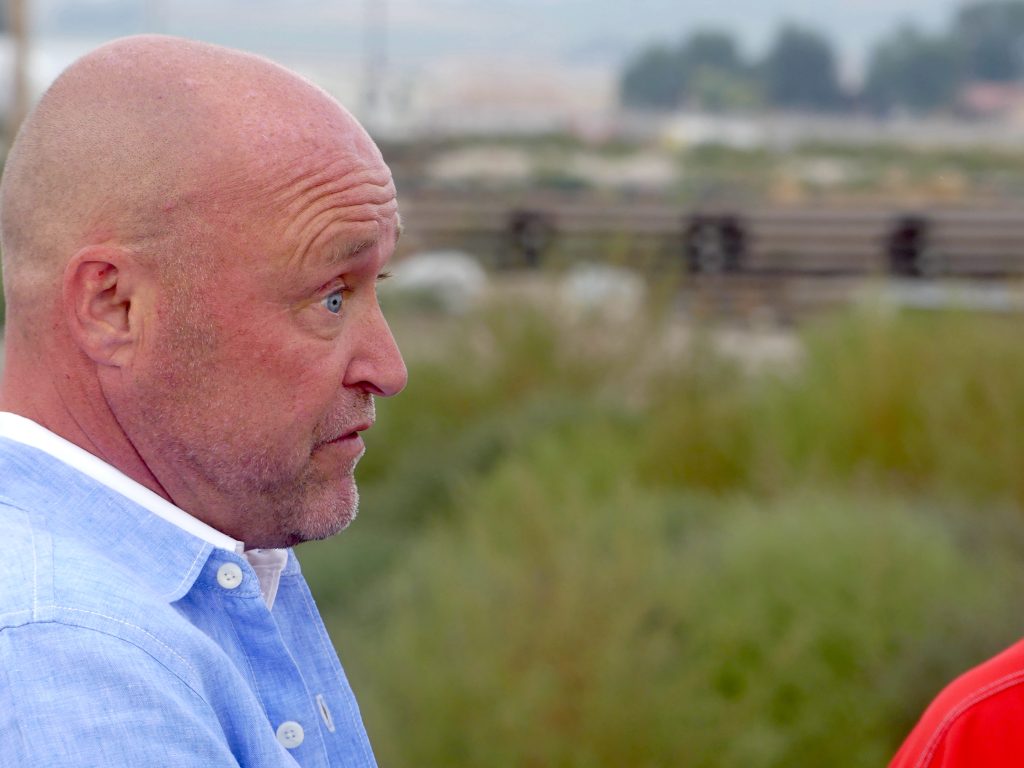
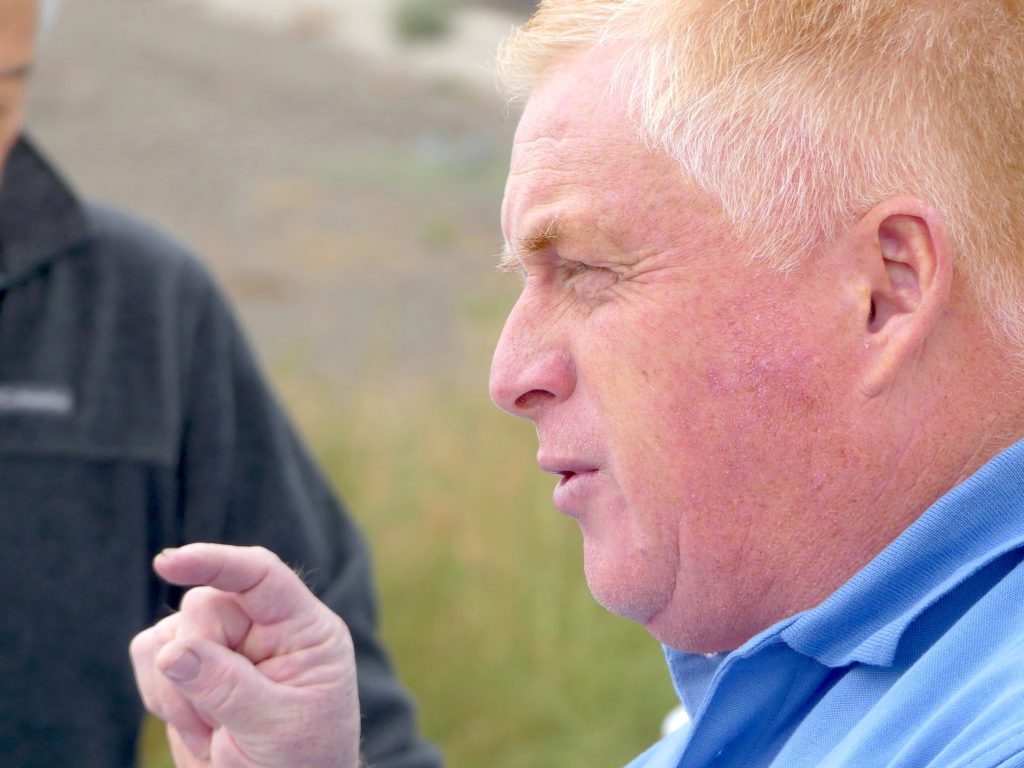
At the Nov. 2 meeting, Baird told the court that the confusion over Track C was a “misunderstanding.”
“We didn’t know the railroad wouldn’t provide service if it wasn’t built,” said Baird.
Baird has described in other meetings recent visits to the rail site by railroad officials, described as inspection tours. Anderson Perry has a $1.75 million contract to supervise construction of the reload center.
Baird said some work on Track C had already been done even though it wasn’t part of a contract. He said filling in a wetland for the path of the track had to be done to avoid issues with federal permits.
He said $500,000 was needed to finish putting in the rail grade and another $1.5 million for the track itself.
Jacobs said in an interview after last week’s meeting that he directly talked with representatives of RailPros.
He said the firm “indicated that Track C was never really taken off the table … To do that, they would have to have submitted a change order.”
No change order was executed, he said.
During the meeting, Jacobs questioned the costs and asked for an itemized breakdown of what $2 million would pay for. Hodge joined in the request.
Jacobs said in the interview that for now he won’t support a county grant to the development company.
“For one thing I’d like to see them secure money from other sources. I’d like to see the onion growers get some skin in the game,” said Jacobs.
Jacobs said the court “could look at” meeting directly with RailPros and Union Pacific on the spur issue “but RailPros assured me that Track C has got to be done.”
Jacobs said he was “not happy” about the new request from the development company.
“They made everyone believe we could get by without Track C. They never came out and said that but that was the insinuation with their advice,” said Jacobs.
Hodge said he was left with more questions than answers after the request was made. He said he has not communicated with RailPros and has relied on the project team for information about the rail center.
Hodge said he wants to see the itemized cost list and that if items are “all legitimate” then the county will “do something.”
He said he also was puzzled about the timing of the funding request in relation to news that Malheur County was receiving an unexpected $12 million in federal funds over two years.
“All of the sudden we find out we will get $12 million and all of the sudden Track C has to be completed. How did that happen? How did we not know? Well, no one seems to have a damn answer,” said Hodge.
Hodge said as far as he was concerned “everything was going good and then we are slapped in the face that Track C has to be done because it was in the original contractual agreement … If the contract has that all along, why has everyone been saying for the last year and a half the track could be completed at a later date? I don’t understand that.”
Smith and Baird have declined interview requests and have not responded to written questions about the matter from the Enterprise. Smith said it would take five weeks to produce public records regarding the track issues.
Hodge said he’s asked Joyce about communicating directly with RailPros and Union Pacific on Track C.
Representatives of the two companies have not appeared before the development company board or the county court since construction started last fall.
“We have to have some conversations with these people,” Hodge said.
Hodge said “there are some tough questions that have to be asked” about the project and Jacobs said he has “a lot of concerns.”
“If I said I was happy about this I’d be lying,” said Jacobs.
News tip? Contact reporter Pat Caldwell at [email protected]
PREVIOUS COVERAGE:
A rail spur cast as a $2 million surprise was required in reload center plans
Senator defends push for $3 million; records contradict his rail project claims
Surprise $2 million cost drives reload center deeper into financial trouble
Rail board sets public hearing on no-bid contract for concrete work at Nyssa reload center
With no public notice, rail reload center board moves ahead on interviews to fill empty slots
More contract troubles dog Smith in public work as business awarded without bidding

